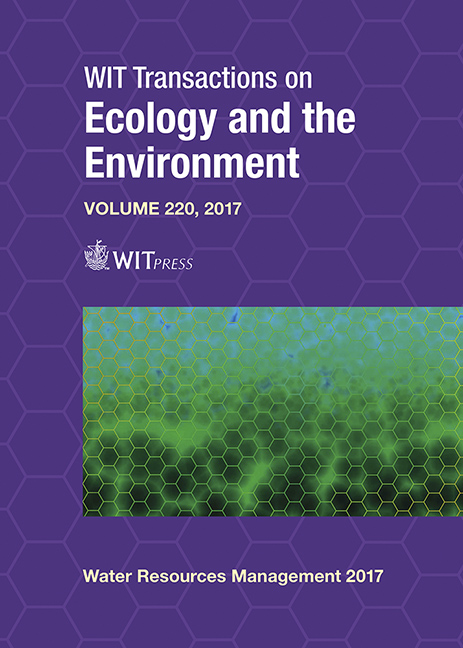EXPLOITATION SAFETY OF WATER SUPPLY SYSTEMS IN AREAS USED FOR AGRICULTURE
Price
Free (open access)
Transaction
Volume
220
Pages
10
Page Range
253 - 262
Published
2017
Size
340 kb
Paper DOI
10.2495/WRM170241
Copyright
WIT Press
Author(s)
IZABELA ZIMOCH, ANDRZEJ KUŚNIERSKI
Abstract
The factors that determine safety loss in the exploitation of water supply systems (WSS) are random threats (draught, flood,) which lead to interruptions in water supply or delivery of lower quality water to the consumer, thus social and financial losses. Therefore, actions to understand these threats are major step towards a clear-cut evaluation of the safety of water supply systems.
Risk estimation and evaluation for undesirable events is especially important in case of smaller WSS located in agriculturally exploited areas. In order to support those systems, the paper proposes a simplified methodology of risk evaluation for WSS. Proposed analytical procedures utilize a universal method, i.e. a five-parameter risk matrix that considers: the probability of an undesirable effect, the exposure of the water supply systems to agricultural threats, financial effects, number of endangered consumers and the level of WSS protection from threats and their results.
The research algorithm consists of two stages of analysis that result in determination of: risk value ri for each water supply circuit (WSC – a subpart of WSS), a total risk value rt for an entire WSS and their categorization levels defined as: tolerated, controlled and unacceptable risk. The article also presents the results of practical applications of the research methodology in risk evaluation for existing water supply systems in southern Poland. These analyses were conducted for a 6-year research period (2010–2015) and concerned 4 independent WSS located in areas with intensive agricultural exploitation, including plant cultivation and animal breeding.
Keywords
water, safety, water supply system, risk, risk matrix, agriculture





